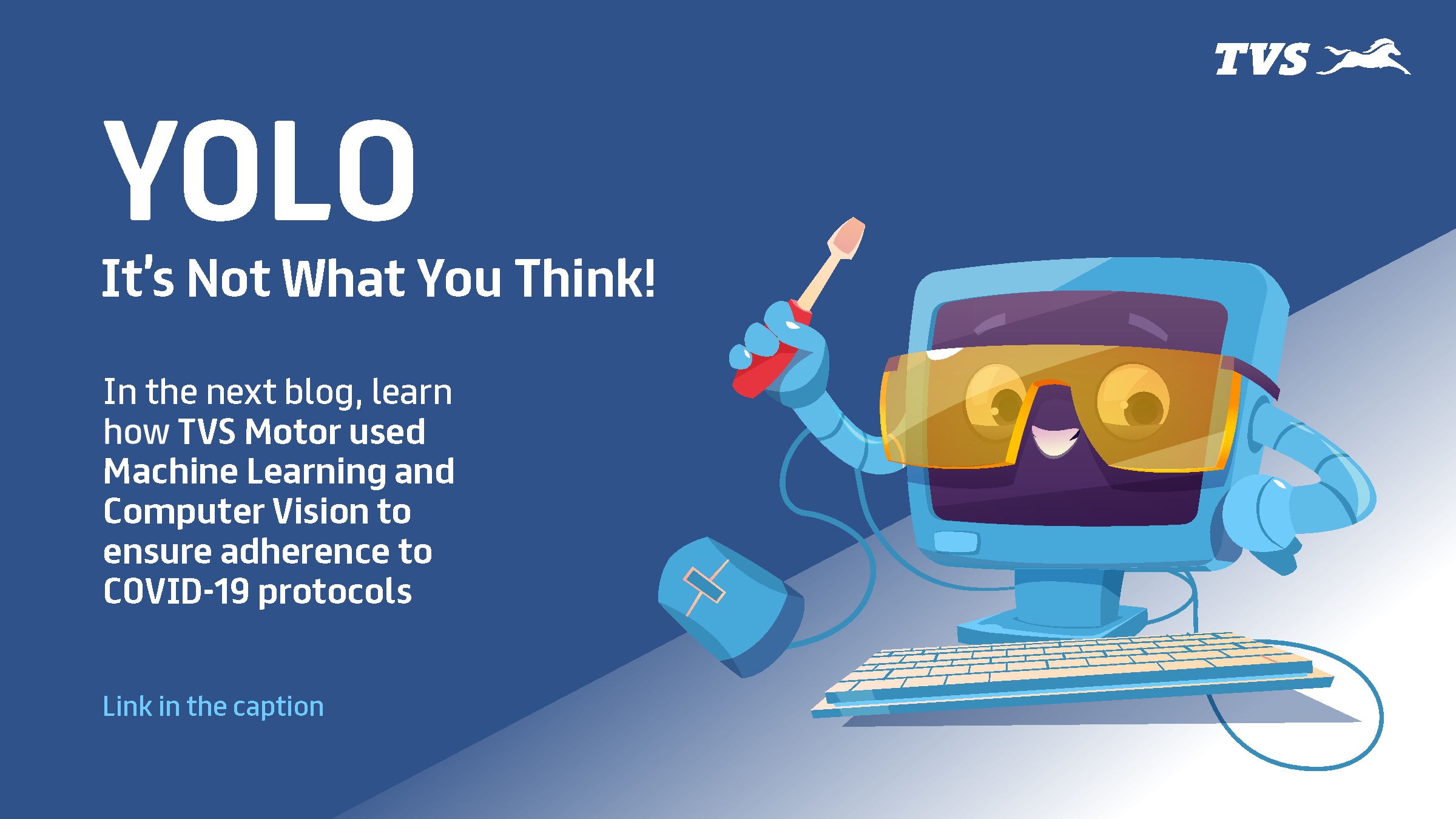Defect detection in manufacturing can significantly benefit from machine learning (ML) and computer vision (CV). According to McKinsey, the “benefits of defect detection and other Industry 4.0 applications are estimated to create a potential value of $3.7 trillion in 2025 for manufacturers and suppliers.”
Our earlier blog covered how we are doing that in TVSM Motor for packing assembly operations using algorithms like YOLO (You Only Look Once), FRCNN and integrating with other technologies like IOT and Manufacturing execution systems. (To know more about this, check out our blog - Vision AI For Quality Enhancement In Packing)
Let us look at another application of these vision AI algorithms, in implementing COVID-19 protocols. Confused?
When all recognised that physical distancing and wearing face masks effectively controlled the transmission of the virus, we developed an “AI-Based - Social Distance Monitoring System & Mask Wearing Detection System” in our factories and global offices of TVS Motor group companies. To date, the system is working and has received multiple international accolades. Let us see how the solution works.
Prerequisites: Perspective Correction, Computer Vision, Pedestrian Detection, Deep Learning
Technical Details: We used YOLO - deep architecture for Person Detection & RCNN (Region-based Convolutional Neural Network) based deep architecture for mask detection. Both models have their own advantages and limitations. YOLO is faster than other popular deep models and can be used in real-time to detect objects, while RCNN based model gives more accurate results than YOLO.
For Mask Detection System, we trained the model with the “mask / no-mask” dataset. For Social Distance Monitoring System, after detecting the person, (we used pre-trained weight files), we estimate the distance between each person. The base was taken from Andrew Ng’s Landing-AI. There, it is mentioned to go for a bird’s eye view by morphing the perspective view to find the actual distances between people. However, this is expensive due to high computation, as every frame needs to be morphed. Also, the camera calibration needs the presence of the deployment team at the site.
We overcome the above hurdles with the following innovative assumptions:
-
1. We assumed that the employees had a uniform height. This simplifying assumption helped us in remote deployment.
-
2. As a person moves away from the camera, we assume their height and distance from another person(s) vary linearly and proportionately. This helped in reducing the computation cost.
Similar to the aforementioned packing assembly defect detection system, these algorithms are integrated into a system that triggers emails upon detecting violations by either wearing face masks or social distancing. These, coupled with dashboards and operational rigour, helped us with team member safety while ensuring operational continuity.
Due to the multidisciplinary nature of computer vision technology, it can support teams working in different fields. While the COVID-19 and packing assembly use cases are exciting applications of the technology, there are numerous other applications like at the dealerships to improve sales or inefficient document processing. New applications of vision AI are currently being tested and introduced.
Sample alarm snaps for each are given below (red lines/boxes are showing violations):

Social Distance Violation Alarm

Mask Wearing Violation Alarm




Any job vacancies